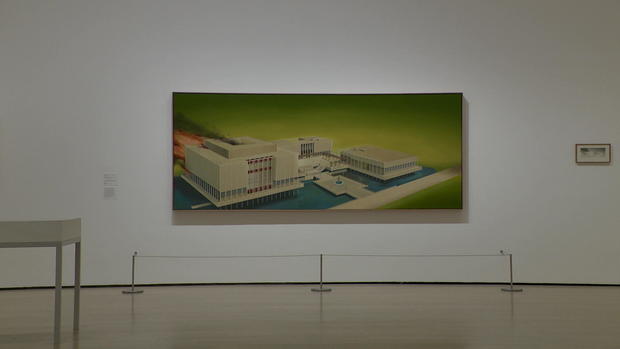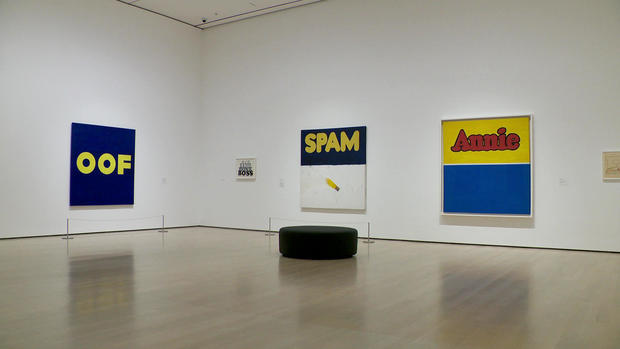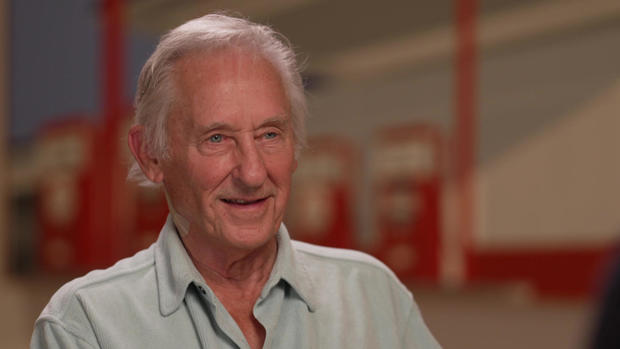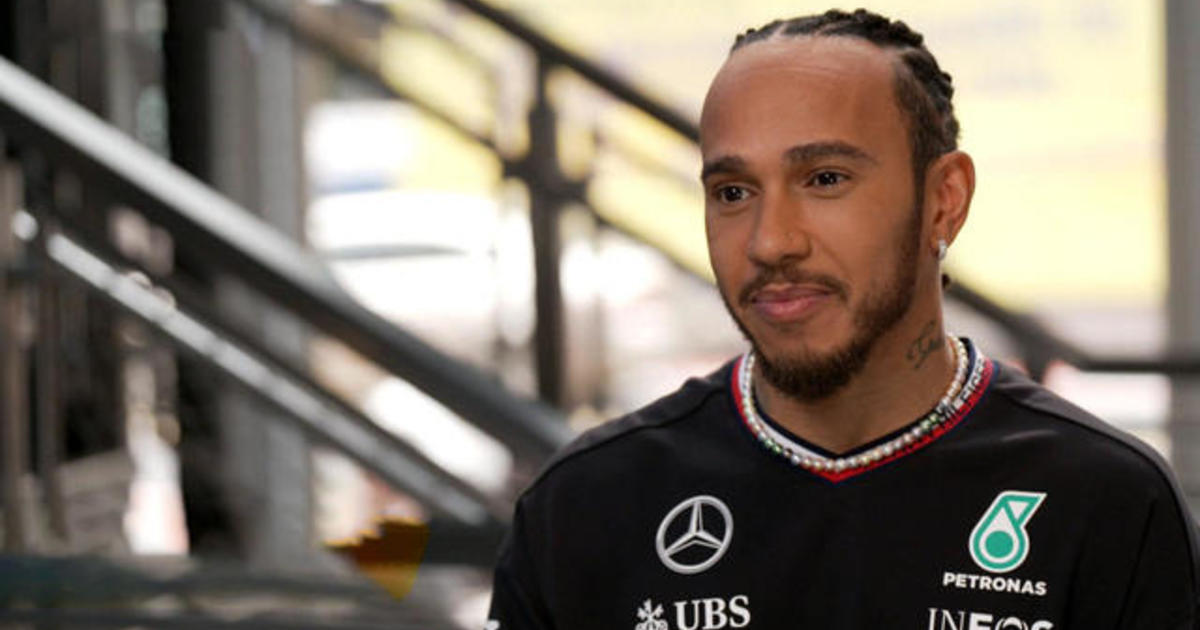Artist Ed Ruscha on his career-spanning retrospective
"If I paint a mountaintop, it's not really a mountaintop; it's an idea of a mountaintop," said artist Ed Ruscha.
Some artists are so weird and wonderful, you just can't stop thinking about them.
Maybe that's why "CBS Sunday Morning" profiled Ruscha in 1983:
…and again in 2011…
... and now, a third time.
Asked about his reputation for being laid back, Ruscha said, "Well, that's probably 'cause I'm fatigued from doing all this painting, see?"
"But interviews, you love doing, right?" asked Pogue.
"Oh, I love, love doing interviews, yeah!" he laughed.
New York's Museum of Modern Art is presenting the biggest Ruscha show ever. "Here's an artist who is now in his mid-80s, who's without question one of the most important living artists, not just in the United States, but in the world," said museum director Glenn Lowry. "He may deploy irony in interesting ways, but there's something in almost everything he does that you can grasp and understand personally."
The exhibition, "Ed Ruscha / Now Then," is a career-spanning exhibition containing more than 200 works. "They're from all these different periods and years -- I forget what some of 'em are like, and, 'What was I thinking when I did that?'" Ruscha said.
After growing up in Oklahoma, in 1956 Ruscha drove across the country to Los Angeles to attend art school. Already, some of his career-long themes were forming, like gas stations. He published a now-famous photo book of 26 gas stations, called "Twentysix Gasoline Stations," and made painting after painting of one in particular, a Standard Oil station in Amarillo, Texas.
What is it with the gas stations? "You can ask yourself, 'Is it about the gas station, or is it about this beautiful oblique that almost cuts that canvas into two perfect halves?'" asked Christophe Cherix, the show's curator.
Burning buildings crop up fairly often, too, including the Los Angeles County Museum of Art (to which the exhibition will move next year). "I had a distaste for museums in a sense," Ruscha laughed. "It was a little protest, probably!"
Los Angeles and Hollywood also play recurring roles. "I liked the weather out there, and I liked the palm trees and hot rods and all that kind of stuff," Ruscha said. "I still live there, and I love it and I hate it!"
In 1965, he stood on the back of a pickup truck and photographed every single building on Sunset Boulevard -- all 22 miles of it. He repeated the project again, and again -- 30 times, by his count.
There was a period in the seventies when Ruscha made his paintings with anything but paint. He tried gunpowder, tobacco juice, egg yolk, axle grease, caviar, even his own blood. "I did all that when I was bored with paint," he said. "I just thought, 'I'm gonna take a breather here and use some other materials.'"
Including, at one point, chocolate -- an entire room made of chocolate and paper. "You can't transport it. You can't ship it," said Cherix. "They have to bring the chocolate, and melt the chocolate, and do it really on site."
But few Ruscha paintings are as recognizable as his word art. "I liked the monosyllabic utterings," he said. "Oof and boss and things like that. Ace. I always felt like 'Ace' was a funny name. I just thought, 'Well, it'll make a good picture.'"
Of course, not everybody "gets" all of his paintings, not even MOMA director Glenn Lowry.
Pogue asked, "Can we agree that some of these paintings are cryptic?"
"Totally!" Lowry replied. "They are cryptic, and they're fascinating."
As Ruscha explained, "To try to step back and explain it, that's almost like searching for bones in ice cream. Probably is not gonna happen. You just have to step back and look at things, not to think too much about what they mean."
At age 85, Ruscha still lives in L.A., and still makes art. Still sells a lot of art, too. One work, "Hurting the Word Radio, #2" from 1964, went for more than $52 million at Christie's four years ago.
Pogue asked, "Is that the painting that you would've chosen as your most valuable?"
"No, I sure wouldn't!" Ruscha laughed. "I have another painting back over here (the 1963 "Noise, Pencil, Broken Pencil, Cheap Western") that I felt like was my favorite painting that I've ever done."
Asked to describe seeing his life's output of work in one building, Ruscha said, "It's almost like an avalanche, you know, of things that have happened throughout my life. And I kind of liken it to when I look back on all the eggs that I've eaten in my life. Sort of a cascade of all these eggs coming at me, you know?"
For more info:
- "Ed Ruscha / Now Then," at the Museum of Modern Art, New York City (through January 13, 2024), and at the Los Angeles County Museum of Art (April 7, through October 6, 2024)
- Exhibition Catalogue: "Ed Ruscha / Now Then: A Retrospective," edited by Christophe Cherix with Ana Torok and Kiko Aebi (Museum of Modern Art), in Hardcover format, available via Amazon, Barnes & Noble and Bookshop.org
- Ed Ruscha Catalogues Raisonnés
Story produced by Julie Kracov. Editor: George Pozderec.










